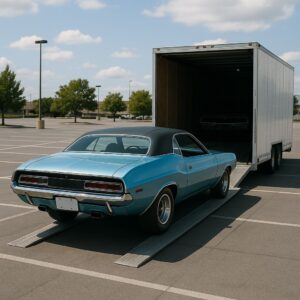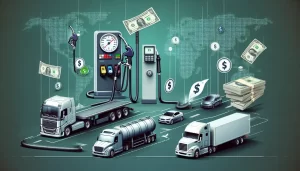
Open vs. Enclosed Car Transport Guide
When it comes to shipping your vehicle, selecting the right transport method is crucial—especially if your car holds high financial or sentimental value. The two most common options are open and enclosed (covered) transport. Both have their merits, but choosing the best fit depends on your vehicle type, protection needs, and budget. Here’s everything you need to know to make an informed decision.
What Is Open Transport?
Open transport is the industry standard and the most widely used vehicle shipping method. Vehicles are loaded onto an open trailer, typically stacked in two rows. This method is highly visible on highways and is popular for shipping multiple vehicles at once.
Benefits of Open Transport:
- Cost-Effective: Open transport is more affordable since carriers can ship more vehicles per trip.
- Efficient: Easier to schedule and faster turnaround times due to its popularity.
- Eco-Friendly: Transporting more vehicles at once helps reduce emissions per car.
Considerations:
- Exposure to weather, dust, and road debris.
- Potential for minor cosmetic damage (e.g., paint chips or dings).
- Best suited for standard, non-luxury vehicles or short-distance moves.
What Is Enclosed (Covered) Transport?
Enclosed car transport is the premium option for shipping vehicles. It involves transporting your car inside a covered trailer—essentially a mobile garage—offering maximum protection throughout the journey.
Benefits of Enclosed Transport:
- Superior Protection: Shields vehicles from rain, snow, dust, and debris.
- Enhanced Privacy: Keeps high-value cars hidden from public view, reducing risk of theft or vandalism.
- Peace of Mind: Ideal for classic, exotic, luxury, or project cars that need extra care.
Additional Features to Look For:
- Hydraulic lift gates for low-clearance vehicles
- Soft tie-downs to prevent underbody damage
- Climate-controlled trailers for added safety
- Real-time tracking and full insurance coverage
Cost Considerations:
Enclosed transport is more expensive—typically costing 30–60% more than open transport—due to the specialized equipment and lower vehicle capacity. However, for high-value cars, the extra investment often pays off in peace of mind.
Making the Right Choice
Choose Open Transport If:
- You’re shipping a standard or everyday-use vehicle.
- You’re working with a tight budget.
- Cosmetic exposure isn’t a primary concern.
- You’re moving multiple vehicles or over a short distance.
Choose Enclosed Transport If:
- You’re transporting a luxury, classic, vintage, or collector vehicle.
- Your car has a custom paint job or fragile exterior.
- You want the highest level of protection and privacy.
- The vehicle holds significant personal or monetary value.
Choosing a Reliable Transport Provider
No matter which option you choose, selecting the right carrier is essential:
- Look for companies with proven experience and strong reviews.
- Confirm they are licensed, insured, and offer transparent pricing.
- Ask about their equipment, safety protocols, and communication process.
- Ensure comprehensive insurance is included in your quote.
Final Thought
Shipping a vehicle—whether it’s a daily driver or a prized collector’s item—is a big decision. By understanding the pros and cons of open vs. enclosed car transport, you can confidently choose the method that best aligns with your needs. For vehicle owners who prioritize maximum protection and peace of mind, enclosed transport is a smart investment. But for many standard transports, open carriers offer a reliable and budget-friendly solution.
Wherever your car is headed, the right transport solution ensures it arrives safely, securely, and on time.
Ready to Transport Your Vehicle?
Whether you’re shipping a luxury car, classic collectible, or everyday vehicle, FCT Transport offers reliable, professional auto transport services anywhere in the continental U.S.
Contact us today for a free, no-hassle quote and experience the FCT difference.




